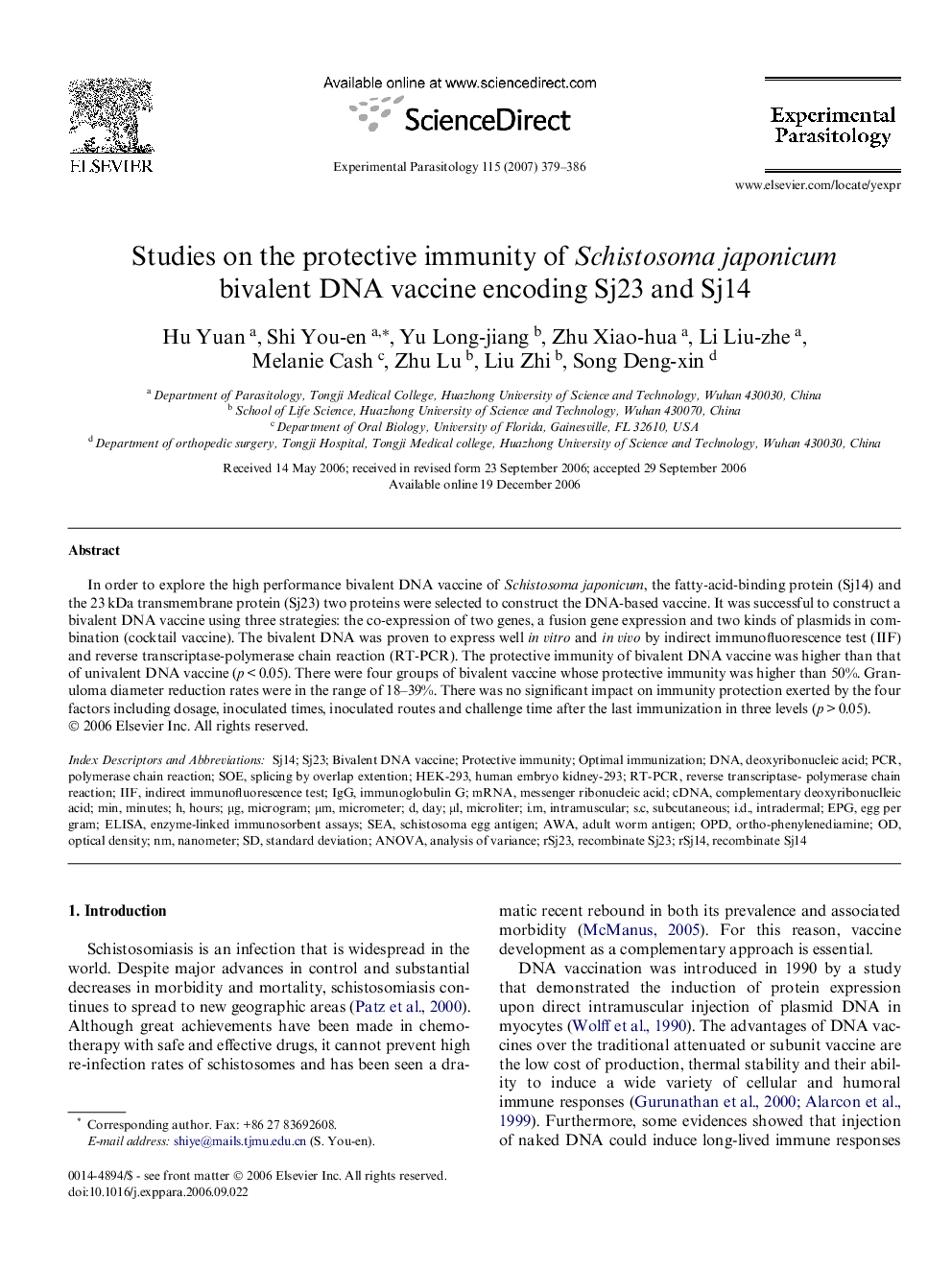| Article ID | Journal | Published Year | Pages | File Type |
|---|---|---|---|---|
| 4371758 | Experimental Parasitology | 2007 | 8 Pages |
Abstract
In order to explore the high performance bivalent DNA vaccine of Schistosoma japonicum, the fatty-acid-binding protein (Sj14) and the 23 kDa transmembrane protein (Sj23) two proteins were selected to construct the DNA-based vaccine. It was successful to construct a bivalent DNA vaccine using three strategies: the co-expression of two genes, a fusion gene expression and two kinds of plasmids in combination (cocktail vaccine). The bivalent DNA was proven to express well in vitro and in vivo by indirect immunofluorescence test (IIF) and reverse transcriptase-polymerase chain reaction (RT-PCR). The protective immunity of bivalent DNA vaccine was higher than that of univalent DNA vaccine (p < 0.05). There were four groups of bivalent vaccine whose protective immunity was higher than 50%. Granuloma diameter reduction rates were in the range of 18-39%. There was no significant impact on immunity protection exerted by the four factors including dosage, inoculated times, inoculated routes and challenge time after the last immunization in three levels (p > 0.05).
Keywords
μgintradermalIIFμMμLs.cRT-PCRHEK-293mRNAIgGMicrogramSOEAWAcDNADNAopdindirect immunofluorescence testenzyme-linked immunosorbent assaysdeoxyribonucleic acidstandard deviationortho-phenylenediamineepgProtective immunityimmunoglobulin Ganalysis of varianceANOVAELISAMinSeaminutesmessenger ribonucleic acidDAYsubcutaneoushoursi.d.IntramuscularMicrolitermicrometernanometerpolymerase chain reactionPCRoptical density
Related Topics
Life Sciences
Immunology and Microbiology
Parasitology
Authors
Hu Yuan, Shi You-en, Yu Long-jiang, Zhu Xiao-hua, Li Liu-zhe, Melanie Cash, Zhu Lu, Liu Zhi, Song Deng-xin,
